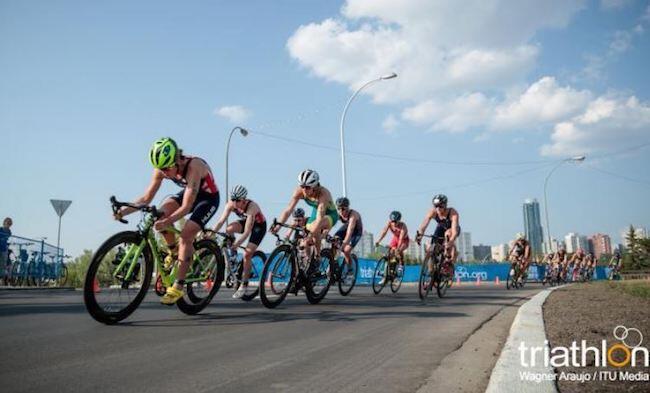The development and cadence in the triathlon
We will explain both concepts and the relationship between them.

The development and the cadence to train triathlon are two essential concepts to know that entail a multitude of doubts and confusion.
Therefore, we will explain both concepts and the relationship between them.
The development
The development of a bicycle is the combination between gears and speeds that presents, that is, between the plates and the pine nuts.
More specifically they are the teeth of each one of the plates and each one of the crowns that form the cassette (or piñonera) what marks the development.
In this way, when they mention a 50 × 34 plate combination means that the bike presents a Large plate of 50 teeth and one small 34.
The cassette
As to Boxes The expression 11 × 28 will express us in the same way as the small pinion is from 11 teeth and the large 28 teeth, although in this case also the number of speeds is usually specified (10vx11x28).
The expansion of triathlon practice at the grassroots level has led to multi-purpose developments that allow face the differences of any athlete.
An example of this is the compact systems, what are they presenting 50 × 36 or 50 × 34 dishes in front of the traditional 53 × 39 dishes.
The difference between the two is that the traditional allow greater advancement by pedaling to equality of pinionHowever they need to apply more force.
Connecting rods
The importance of development lies in the fact that it determines us the distance the bicycle travels for each complete turn of the cranks by means of a small formula (the meters that we travel):
Therefore we can understand that the bigger the dish and the smaller the crown, the more meters we will advance for each round of the pedal.
However, physical condition marks our possibilities to "move developments" and puts cadence at stake.

The cadence
Cadence is defined as the number of turns of the rods per minute, that is, the number of pedals per minute that is commonly expressed as rpm (Revolutions per minute).
In broad strokes we can understand that the more expensive the development (long developments), the cadence will be lower, while with more comfortable developments (short developments) the cadence will be higher.
La pedaling efficiency It's found between the 70 and the 100 rpm depending on the unevenness of the terrain and the physical condition of the athlete.
The target 90 pedaled per minute,
This means that cadences around 90 pedals per minute they have a good relationship between the muscular energy used for pedaling and the advance of the bicycle
In summary, if we opt for long developments with the intention of advancing more but we do not have the adequate physical conditions to maintain an efficient cadence, the muscle expenditure that this strategy will involve will be very high.
If we get stuck
We have an example when we feel "stuck" going up a slope.
Therefore, look for developments that allow us to take cadences around the 90 rpm in plains and no less than 60 rpm on uneven terrain It will be more suitable.
Do not forget that you are a triathlete and, even though we find similarities with cycling, you must look for more efficiency in your pedals Since your competition ends with the walking segment!

Laura García Cervantes
There are no previous results.




























